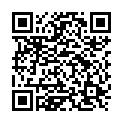|
|
|
| Module code: MST.SPR |
|
|
6PA (6 hours per week) |
|
8 |
| Semester: 6 |
| Mandatory course: yes |
Language of instruction:
German |
Assessment:
Project work
[updated 10.05.2021]
|
MST.SPR (P231-0076) Mechatronics and Sensor Technology, Bachelor, ASPO 01.10.2012
, semester 6, mandatory course
MST.SPR (P231-0076) Mechatronics and Sensor Technology, Bachelor, ASPO 01.10.2011
, semester 6, mandatory course
|
90 class hours (= 67.5 clock hours) over a 15-week period.
The total student study time is 240 hours (equivalent to 8 ECTS credits).
There are therefore 172.5 hours available for class preparation and follow-up work and exam preparation.
|
Recommended prerequisites (modules):
None.
|
Recommended as prerequisite for:
|
Module coordinator:
Professor/innen des Studiengangs |
Lecturer:
Professor/innen des Studiengangs
[updated 16.04.2013]
|
Learning outcomes:
After successfully completing this course, students will be able to plan, execute, evaluate and document sensor development tasks using practical engineering tools. They will be able to implement a given project plan including the design and characterization of a specific sensor, its project and cost planning and its comparison with commercially available products.
[updated 10.05.2021]
|
Module content:
The sensor technology project was developed from an existing practical course on sensor technology. In the past, 9 different experiments were set up in three laboratories. This practical course was converted into a project format, i.e. the students no longer carry out and record the respective experiments according to a precisely defined plan, but work on one topic over the entire semester. First, students work through relevant literature, plan experimental setups and build them in the workshop, conduct experiments and draw conclusions from their results for use later in the course. Project topics can be selected from the following experiments:
1. Pressure sensor technology
2. Water in oil sensor
3. Position and distance sensors
4. Light barriers and light bands, smoke detectors
5. Light source qualification (power, spectrum, beam profile)
6. Triangulation sensor design
7. Force or load sensor design
8. Temperature and flow sensor technology
9. Vacuum measurement technology and mass spectroscopy
Here is an example of a project on the topic of "Force or load sensor design":
- Review of selected literature on force and load sensor design
- Creation of a market analysis of available, commercial sensors
- Planning and pre-calculation (simulation) of a sensor setup and suitable measuring equipment for installation in an existing load machine
- Application of bondable strain gauges (strain gauges)
- Planning and execution of measurement series, calibration of the sensor and temperature errors
- Development of suggestions for improvement and feasibility check
- Measurement of all necessary data and creation of a sensor data sheet
- Creation of a cost calculation for the production of a specific quantity
- Creation of a final report with project documentation
[updated 10.05.2021]
|
Teaching methods/Media:
Independent project work in groups of 2 to 5 students.
[updated 10.05.2021]
|
Recommended or required reading:
In each case different literature for the individual areas, which are indicated in the project manuals. Suitable for an overview:
- H.R. Tränkler, E. Obermeier, Sensortechnik, Handbuch für Wissenschaft und Praxis
- H. Schaumburg, Sensoren, Band 3 der Reihe Werkstoffe und Bauelemente der Elektronik, Teubner 1992
- H. Schaumburg, Sensoranwendungen, Band 8 der Reihe Werkstoffe und Bauelemente der Elektronik, Teubner
[updated 10.05.2021]
|


